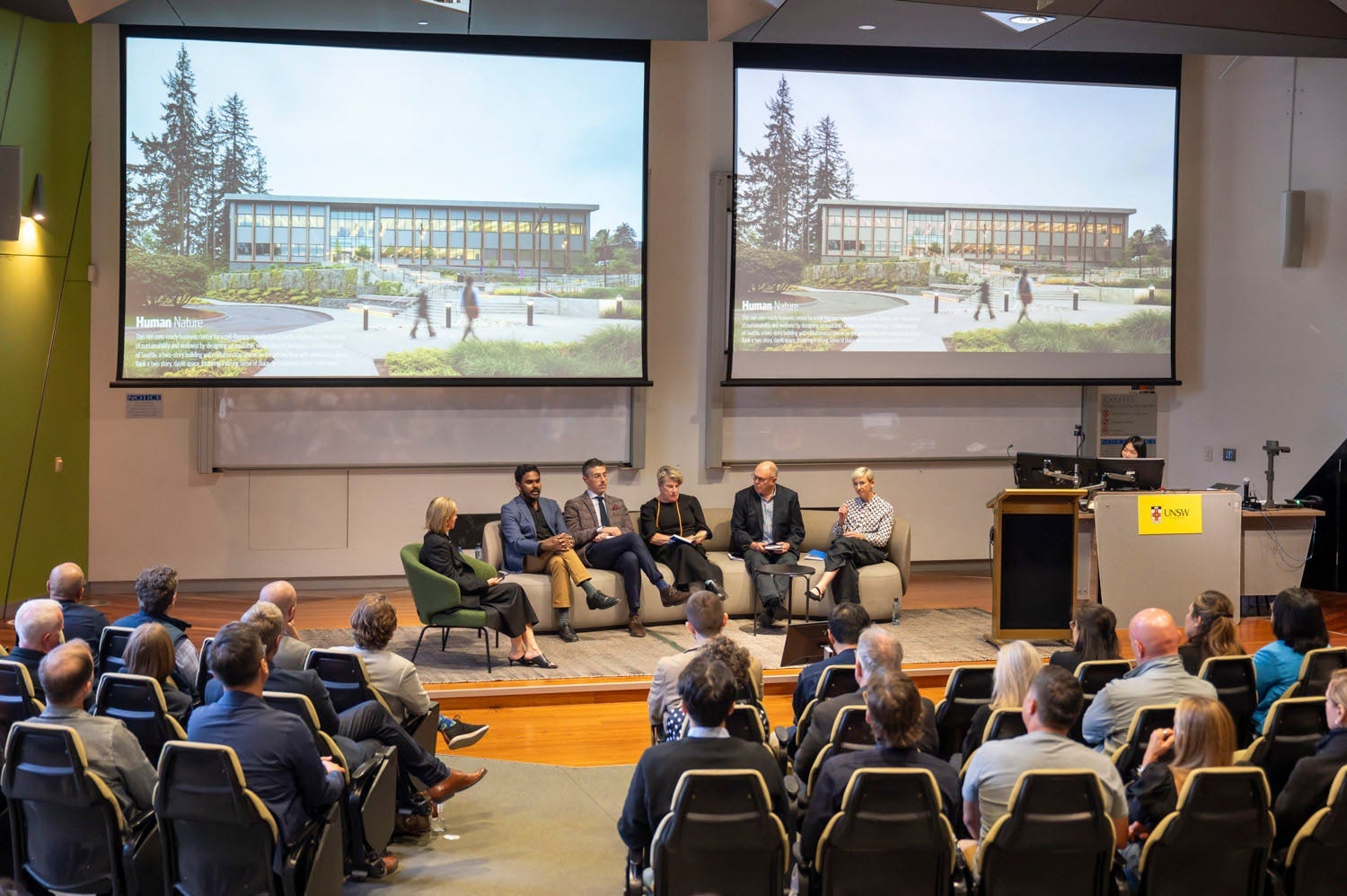
Sharpening Our Design Conscience: Inside Opacity 2025
A Global Design Dialogue
Our Sydney studio recently hosted Opacity, our architecture practice’s annual global design review, which brought together highly esteemed guest critics and practitioners for three days of critical dialogue focused on submitted works from our global studios. Designed to sharpen our design conscience, Opacity challenges conventions, tests ideas, and drives innovation across the practice’s global portfolio.
This year’s review included 93 submissions spanning multiple disciplines, evaluated by an esteemed panel of external jurors including Alice Blackwood (former editor of Indesign magazine), Luciano Cardellicchio (deputy director of architecture at UNSW School of Built Environment), Elizabeth Carpenter (managing principal at fjcstudio), and Lindsay Clare (architect and director of Clare Design). Avinash Rajagopal, editor-in-chief of Metropolis magazine, returned as Jury Chair, with Katie Gerfen, former editor of ARCHITECT magazine, serving as Guest Editor. The program culminated in a global livestream from the University of New South Wales, where 17 finalist projects were celebrated for innovation, collaboration, and design excellence.
“Great design never happens in isolation,” said Simon Fleet, design principal at HDR. “Opacity is a chance to reflect, challenge, and refine our thinking, confirming our work continues to be ambitious, rigorous, and grounded in people and place.”
Alison Potter, design principal at HDR, added: “Opacity gives us permission to pause, test our ideas, and engage with critique in a meaningful way. It sharpens our collective conscience as designers and reinforces our responsibility to create places that are sustainable, contextual and profoundly human. For our teams, it’s both inspiring and grounding — a reminder of why design matters.”

Key Themes
- Placed an emphasis on user-centred design, responsiveness to site, place, and community, together with a foundational approach to sustainability and regenerative design.
- Showcased the importance of curiosity and creativity in finding clear and coherent responses to often highly complex briefs and site conditions.
- Highlighted the designer's role in extending beyond the brief, working closely with clients to positively shape streetscapes, communities, and everyday experiences.
- Considered care in detailing and interior experience while engaging with the public domain and broader urban fabric, reinforcing thoughtful, experience-driven design.
- Reflected on the emergence of mass timber as an increasingly adopted construction material, and the expertise HDR has developed in designing with it across project scales, typologies, and regions.
A Culture of Critique and Collaboration
Opacity also reinforced the value of dialogue and collaboration. Feedback from jurors, paired with discussions among attendees, highlighted how critique strengthens outcomes and inspires new directions for our work. Insights and provocations from the review will be captured in a forthcoming publication, scheduled for release in 2026.
“By connecting studios across Australia and globally, Opacity celebrated design excellence as both a collaborative and reflective practice — one that drives innovation, enhances communities, and reinforces our commitment to creating meaningful, lasting impact,” said Huai Lim, Australian managing principal of architecture at HDR.
Reflecting on the program he founded, HDR’s Design Director Tom Trenolone concluded: “Opacity has always been about cultivating an honest and rigorous dialogue around design. It’s a space where critique becomes collaboration, and where our collective conscience as designers is sharpened. What began as an experiment has grown into a cornerstone of our culture — one that continues to challenge us to do better, think deeper, and design with greater purpose.”
The Opacity Cycle
Officially launched in 2016, Opacity spans a 12-year program divided into four-year cycles. Each cycle includes three annual design reviews, documented in a book highlighting notable projects and jury commentary, with the final year dedicated to deep reflection and the creation of a monograph.






